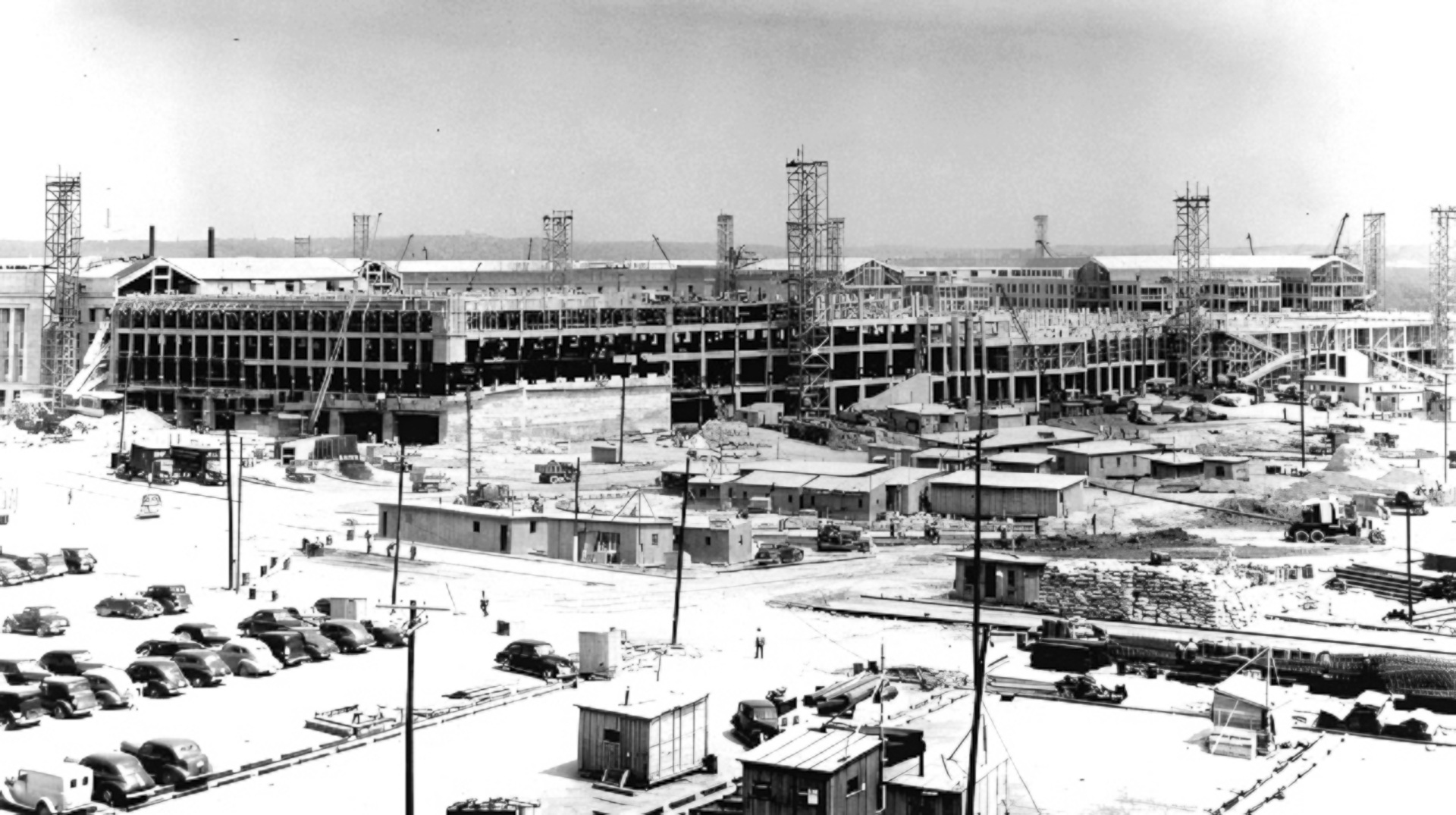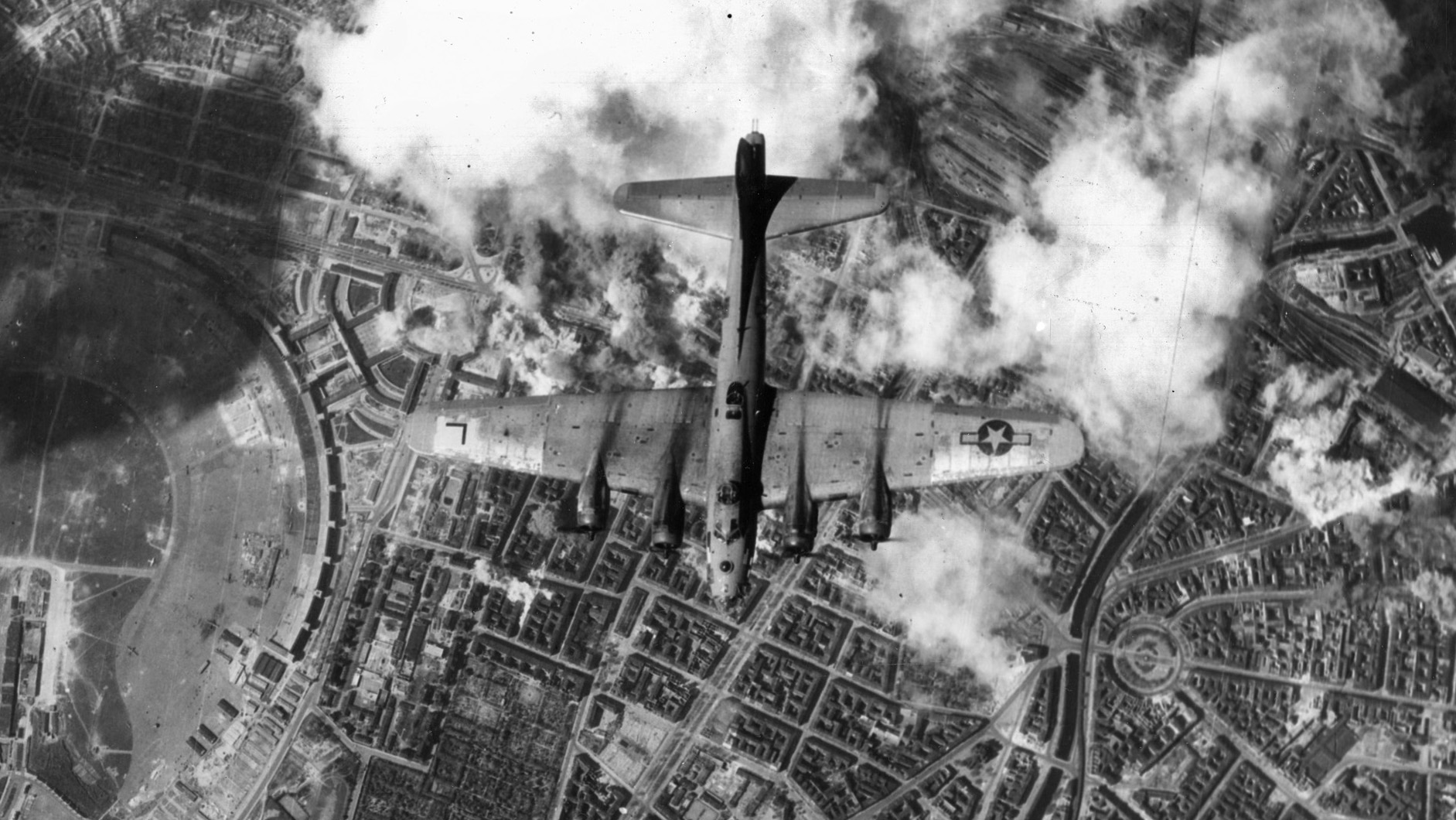On September 11, 1941, exactly 60 years before a terrorist attack damaged the building and changed forever the American way of life, ground was broken for the Pentagon, a five-sided office building which today houses the U.S. Department of Defense and has been an integral component of the nation’s defense establishment since World War II.
Six months before the United States entered the war following the attack on Pearl Harbor, the country was in the midst of a great mobilization. L. VanLoan Naisawald and his comrades who worked in the building’s classified message center were only a few of those military and civilian personnel who occupied it. Prior to its construction, more than 24,000 War Department employees and military men and women were housed in 17 buildings in the Washington, D.C., area. As preparations for war continued, that number was estimated to grow another 25 percent.
Although preliminary plans to erect temporary office buildings for these workers had been considered, Brig. Gen. Brehon B. Somervell, chief of the construction division of the U.S. Army Quartermaster Corps, had another idea. The story goes that he summoned Lt. Col. Hugh J. Casey, another engineering officer, and civilian architect George E. Bergstrom to his office on July 17, 1941. That was a Thursday, and Somervell required of the pair that they come up with plans for a building of four million square feet, capable of housing office space for 40,000 workers. The building was to be no more than four stories tall, and there were to be no elevators. A weekend of intense labor resulted in a proposal for a five-sided building, which was presented to General Somervell the following Monday.
With the idea for the Pentagon in hand, the military moved quickly to win approval for the project. Perhaps there are few better examples of government working at its most efficient. On Monday, the War Department approved the project. The following day, Secretary of War also approved, and on the same day Somervell advised Congress of the plan while Secretary of War Henry L. Stimson informed President Franklin D. Roosevelt. A bill was quickly drafted, and the president and Congress approved $35 million for the construction of the new building. Naturally, the eventual cost topped $80 million!
Following several changes to the original plan and the relocation of the Pentagon from its proposed site between Arlington National Cemetery and Memorial Bridge, construction began in earnest. Progress was so rapid that construction sometimes outstripped the availability of architectural plans. By the end of 1941, more than 4,000 construction workers were laboring in three shifts to complete the building. The shell and roof were finished within a year, and the Pentagon was declared complete on January 15, 1943. Estimates of construction time had ranged up to as long as four years; however, the actual completion time was a near-miraculous 16 months.
With the wartime economy in mind, project managers avoided the use of critical materials in the construction of the building wherever possible. The Spartan appearance of the structure, without ornamentation, is evidence of this. Concrete pipes were utilized instead of metal, while ramps replaced elevators and copper and bronze were eliminated entirely from the materials list. At the height of World War II, it provided office space for more than 33,000 workers.
At the time of its completion, the Pentagon was the largest office building in the United States. Its nearly 18 miles of hallways and corridors cover almost 30 acres. The building has more than three times the floor space of the Empire State Building in New York City. Constructed in five concentric rings, the walking time from one point to another anywhere in the building is a remarkable maximum of only seven minutes.
Today, the Pentagon remains the nerve center of the U.S. military. Approximately 23,000 workers report to the massive building on the Virginia side of the Potomac River near Arlington each day. More than 3.7 million square feet of the building actually house offices, and 100,000 miles of telephone cable route more than 200,000 daily telephone calls.
Perhaps as tangible as the work that takes place there every day, the Pentagon itself has become a symbol of American military might and resolve that is recognized throughout the world.
Michael E. Haskew









Join The Conversation
Comments
View All Comments